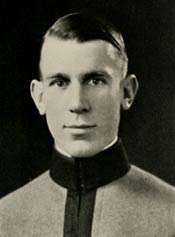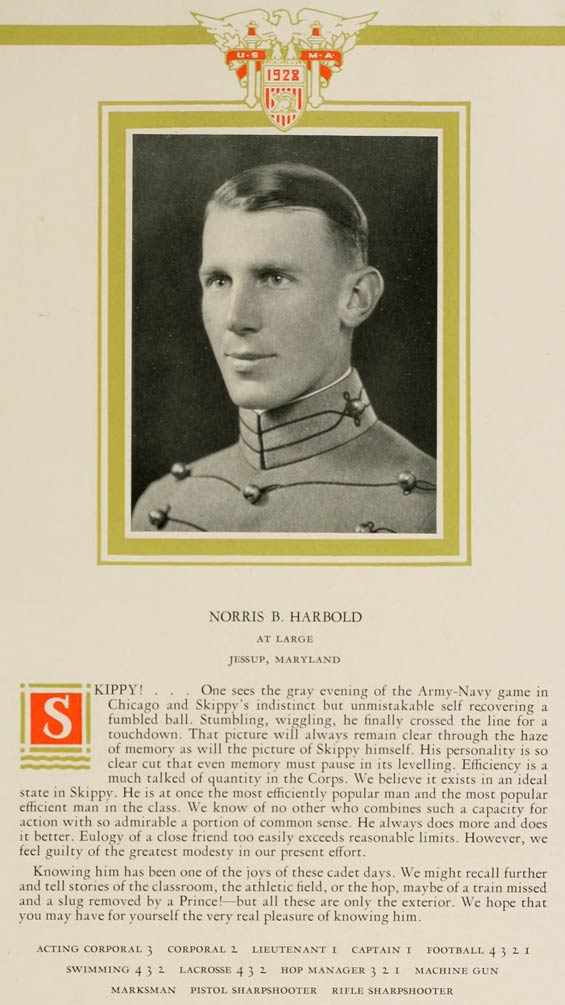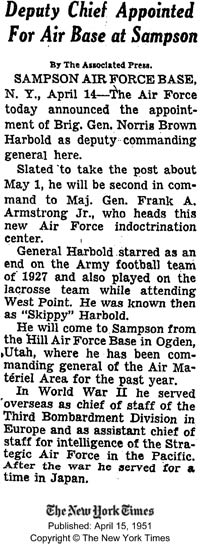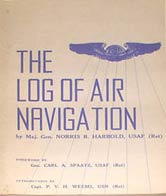|
NAVIGATION: YOU CAN GET THERE FROM HERE, AND BACK
N.B. Harbold, 1928 (Source: Woodling)
 |
Norris B. Harbold was born at Fort Niobrara, NB in 1906. According to his official U.S. Air Force biography, died August 12, 1993. He entered the U.S. Military Academy (USMA) in July 1924, and graduated June 9, 1928. He had a yeomanlike career with the Army, including key assignments during WWII.
According to his biography at the link, he was promoted to first lieutenant April 1, 1934; to captain June 9, 1938; to major January 31, 1941; to lieutenant colonel January 5, 1942; to colonel March 1, 1942; to brigadier general (temporary) February 27, 1944; (permanent) October 9, 1951; to major general October 27, 1954. Below, from the USMA yearbook, is Harbolds photograph and class annotation.
Norris B. Harbold, USMA, 1928 (Source: Woodling)
 |
"Skippy" Harbold landed once at Tucson, Tuesday, March 17, 1931. He was solo in the Boeing P-12-D, 31-253. Based at Detroit, MI Selfridge Field, he arrived from San Diego, CA Rockwell Field eastbound for El Paso, TX. At the time he visited Tucson, he was assigned as engineering officer of the 94th Pursuit Squadron at Selfridge Field.
He appears to have been accompanied by a sister P-12-D, 31-252, flown by H.A. Johnson. They were based together, landed together, and both flew the same itinerary. Interestingly, a day later three additional Boeings, 31-224, 31-226 and 31-225, were landed at Tucson by pilots George Brett, Victor Strahm and S.P. Wright, respectively. They, too, shared the same home base and initial destination as Harbold and Johnson. Given the similar itineraries and the sequential run of airplane numbers, these pilots were clearly ferrying new P-12-Ds from the Boeing factory to Detroit. If you follow Brett's link, you'll find an itinerary plotted on a chart that shows the approximate path of their trip from the Boeing factory back to Michigan. Regardless of the details, all five pilots went on to enjoy prestigious careers with the Army.
I have no information about Harbold's personal life, marriage(s), children or interests. If you can fill in these gaps, please let me KNOW. The archives of The New York Times hold several articles that cite Harbold. They mostly document his changes in command, his inspection of various missile types during the Cold War, his service as best man in friend's weddings, an injury during a football game with Yale (he played end) that kept him from playing again until the Navy game, and the marriage of his son, a 1956 graduate of the USMA.
The New York Times, April 15, 1951 (Source: NYT)
 |
Harbold's military niche was administration, training and navigation. During the 1930s, air navigation, other than by compass and by time/speed/distance calculations, as well as instrument flight in bad weather, was new. Radio aids to navigation rapidly were being developed. See Register pilot Albert Hegenberger for further information on instrument flight techniques and their rollout to military and civilian flight operations alike during the 1930s. Register pilot Robert Henderson was one of the instructors responsible for rolling out the training.
Early in WWII, on June 15, 1942, Selman Field at Monroe, LA was activated. Then colonel Harbold, recognized as a pioneer in navigation training programs, was named Commanding Officer. Within months, the field was a full fledged military establishment, consisting of the pre-flight school (bombardier-navigator) and the advanced navigator school. Selman Field continued to grow in size and became the nation's largest navigation training school during World War II. The organization he crafted ultimately provided 15,349 navigators during WWII.
Harbold commanded the Sampson Air Force Base, Lake Seneca, NY, training facility from July 19, 1951 through July 19, 1952. His initial appointment there was as Deputy Chief as cited in the article from The New York Times, right. Notice that he came on board as second in command to fellow Register pilot Frank A. Armstrong, Jr. The Sampson base closed in 1956 and is now a civilian picnic area named Sampson State Park.
On August 28, 1945, he was awarded the Army Distinguished Service Medal for the standard-worded, "exceptionally meritorious and distinguished services." He ended his military career twelve years later when he retired as a Brigadier General August 26, 1957.
In his retirement, Harbold published a book in 1970, cited in the left sidebar. His book includes a foreword by Register pilot Carl Spatz (1891-1974).
And in 2001 he received a posthumous Fellow Award from the Institute of Navigation (ION), "For his life long contributions to air navigation." ION was founded in 1945; Harbold was president of ION, 1954-1955. ION's Fellow Award is for, "... the advancement of the technology, management, practice and teaching, of the arts and sciences of navigation, and/or for lifetime contributions to the Institute. The Fellow Award is the ION's most prestigious award... ."
---o0o---
THIS PAGE UPLOADED: 05/04/12 REVISED:
|





